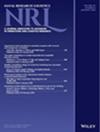在线零售商在实施店铺品牌时的战略合同选择
IF 2.1
4区 管理学
Q3 OPERATIONS RESEARCH & MANAGEMENT SCIENCE
引用次数: 0
摘要
本文研究了需求不确定性对在线零售商与制造商建立品牌合作关系的影响。这项研究考察了在不确定的条件下,这种伙伴关系是否有效,这种伙伴关系涉及通过服务促进需求的努力。供应链由中间商和制造商组成,制造商在服务成本上处于劣势。基准案例是制造商通过与中间商签订代理(AG)合同进行销售。运用两期博弈论模型,分析了AG合同和两种商店品牌合同:原始设计制造商(ODM)和收购(AC)的均衡价格、服务努力和利润。研究发现,当中介的服务成本优势显著时,中介会选择店铺品牌化。中介机构对ODM合同表现出一定的偏好。相反,当它偏离这个中间地带时,AC合同就会变得更加有利。在交流合同框架内,由于佣金较低,特别是当服务成本优势不是特别明显且需求可变性很高时,中介机构选择在实际需求很大时才触发收购选项。由于佣金高,中介避免了收购的选择。这些结果是通过平衡服务成本优势、服务分权和批发价格等因素造成的双重边缘化效应而产生的。通过ODM或AC合同实施商店品牌,当它对中间商最优时,可以提高供应链利润。我们为在线零售商在需求不确定的情况下与制造商建立商店品牌合作关系的决策提供见解。它强调了考虑服务成本优势、服务分散化和批发价格等因素以确定最佳商店品牌策略的重要性。该研究有助于理解供应链动态,并提出了提高在线零售供应链利润的方法。本文章由计算机程序翻译,如有差异,请以英文原文为准。
Strategic contract selection of an online retailer when implementing store branding
This article investigates the impact of demand uncertainty on online retailers' store branding partnerships with manufacturers. The study examines whether such partnerships, involving service effort to boost demand, are effective under uncertain conditions. The supply chain comprises an intermediary and a manufacturer, with the manufacturer facing a service cost disadvantage. The benchmark case is the manufacturer's sale through the agency (AG) contract with the intermediary. Using a two-period game-theoretic model, the study analyzes equilibrium prices, service efforts, and profits for the AG contract and two store branding contracts: original design manufacturer (ODM) and acquisition (AC). Findings show that the intermediary adopts store branding when its service cost advantage is significant. The intermediary exhibits a preference for the ODM contract when the commission fee falls within a moderate range. Conversely, when it deviates from this middle ground, the AC contract becomes more favorable. Within the AC contract framework, with low commission fees, specifically when the service cost advantage is not particularly pronounced and demand variability is high, the intermediary opts to trigger the acquisition option exclusively when the actual demand turns out to be substantial. With high commission fees, the intermediary avoids the acquisition option. These outcomes arise from balancing the double marginalization effect caused by factors like service cost advantage, service decentralization, and wholesale price. Implementing store branding through ODM or AC contracts enhances supply chain profit when it is optimal for the intermediary. We provide insights into online retailers' decision-making regarding store branding partnerships with manufacturers under demand uncertainty. It highlights the importance of considering factors like service cost advantage, service decentralization, and wholesale prices to determine the optimal store branding strategy. The research contributes to understanding supply chain dynamics and suggests ways to enhance supply chain profit in online retail.
求助全文
通过发布文献求助,成功后即可免费获取论文全文。
去求助
来源期刊

Naval Research Logistics
管理科学-运筹学与管理科学
CiteScore
4.20
自引率
4.30%
发文量
47
审稿时长
8 months
期刊介绍:
Submissions that are most appropriate for NRL are papers addressing modeling and analysis of problems motivated by real-world applications; major methodological advances in operations research and applied statistics; and expository or survey pieces of lasting value. Areas represented include (but are not limited to) probability, statistics, simulation, optimization, game theory, quality, scheduling, reliability, maintenance, supply chain, decision analysis, and combat models. Special issues devoted to a single topic are published occasionally, and proposals for special issues are welcomed by the Editorial Board.
 求助内容:
求助内容: 应助结果提醒方式:
应助结果提醒方式:


